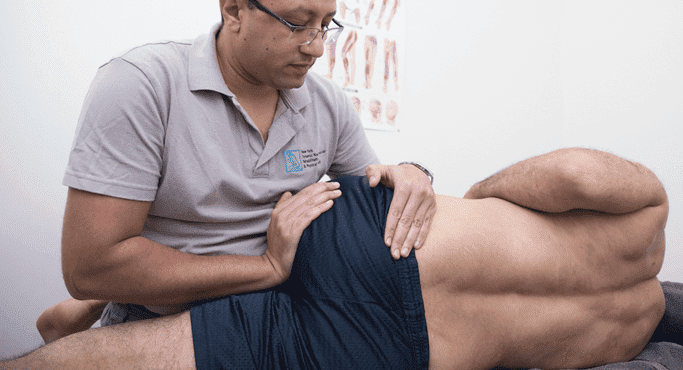August 14, 2023

Hip pain can be both distracting and debilitating, nagging at you with each step or movement. While hip pain is sometimes indicative of a structural problem within the joint (intra-articular), pain can often stem from other sources outside of the joint (extra-articular).
Some common causes of extra-articular hip joint pain include:
● Tendon injuries
● Muscle injuries
● Nerve entrapment
● Pelvic floor issues
● Hernias
● Urinary tract conditions
One not-to layman’s terms, it is the location in your pelvic area where the femur, or thigh bone, meets up with the acetabulum surface of your pelvis, which forms the socket of your hip, a ball-and-socket joint.
Psoas subspine ischiofemoral impingement (IFI) is a syndrome that causes ongoing hip pain. It occurs when soft tissue, most notably the quadratus femoris muscle (a strong external rotator located at the posterior of the hip), becomes entrapped between the lesser tuberosity and the ischial tuberosity of your pelvis – or in layman’s terms, the sit bones.
The result is chronic pain in the posterior hip and the groin…literally a pain in the rear!
Most commonly seen in women, IFI manifests most severely when the hip is extended, rotated outward (externally rotated), or drawn inward (adducted). It may have something to do with a woman’s wider pelvis, and the angle at which the femur descends from the hip socket. Other likely causes of IFI syndrome are:
● Physical inactivity
● Excessive sitting, creating tight hip flexors and lax hip extensors
● Weak core and pelvic floor muscles
● Excess body weight
● Sedentary lifestyle
While surgical interventions are available for IFI, physical therapy is a more effective, enduring and less invasive solution. Therapy should focus on:
● Increased overall physical activity including walking and stair climbing
● Strengthening of the hip extensor muscles
● Strengthening of the hip abductor muscles
● Strengthening of the internal rotator muscles of the hip
● Strengthening of the quadratus femoris
● Strengthening of the core and pelvic floor muscles
● Stretching of the hip external rotators
● Stretching of the hip flexor muscles
The physical therapy team at NYDNRehab in NYC is trained and equipped to full functionality in a matter of weeks?
Dr. Lev Kalika is a world-recognized expert in musculoskeletal medicine. with 20+ years of clinical experience in diagnostic musculoskeletal ultrasonography, rehabilitative sports medicine and conservative orthopedics. In addition to operating his clinical practice in Manhattan, he regularly publishes peer-reviewed research on ultrasound-guided therapies and procedures. He serves as a peer reviewer for Springer Nature.
Dr. Kalika is an esteemed member of multiple professional organizations, including: